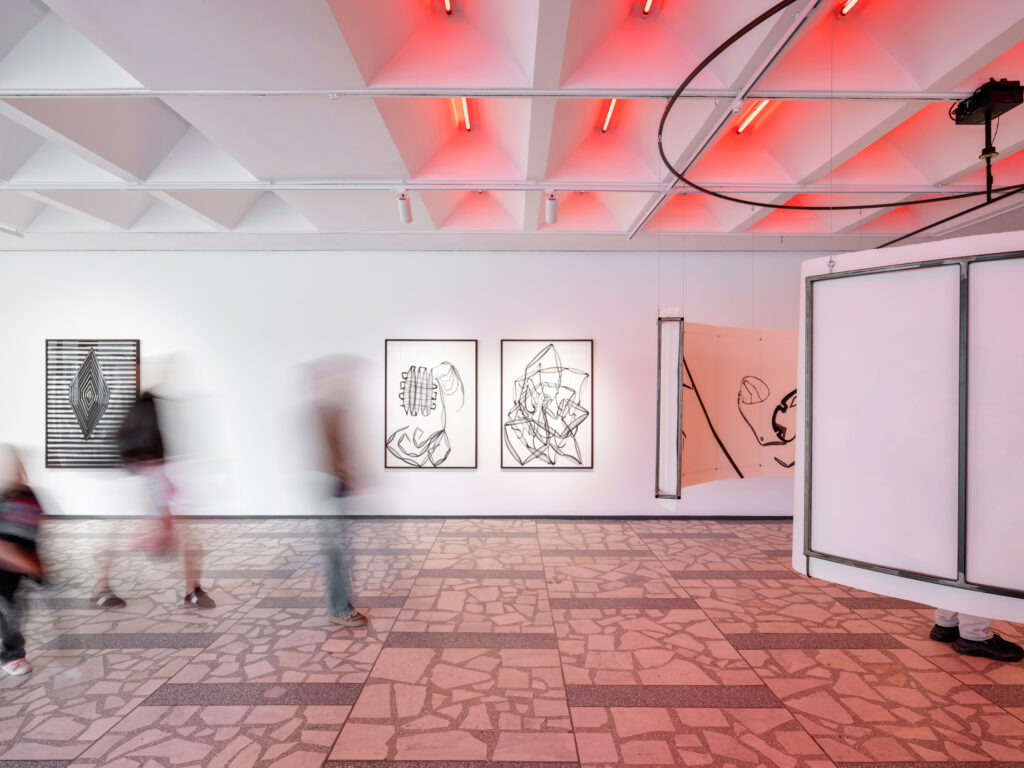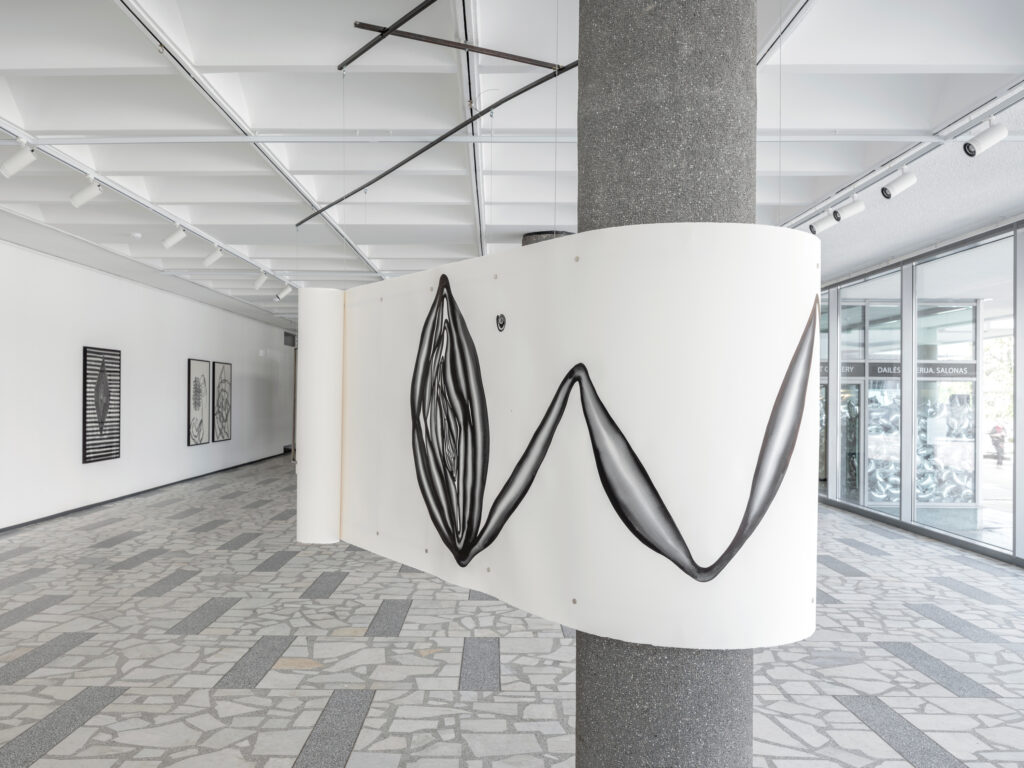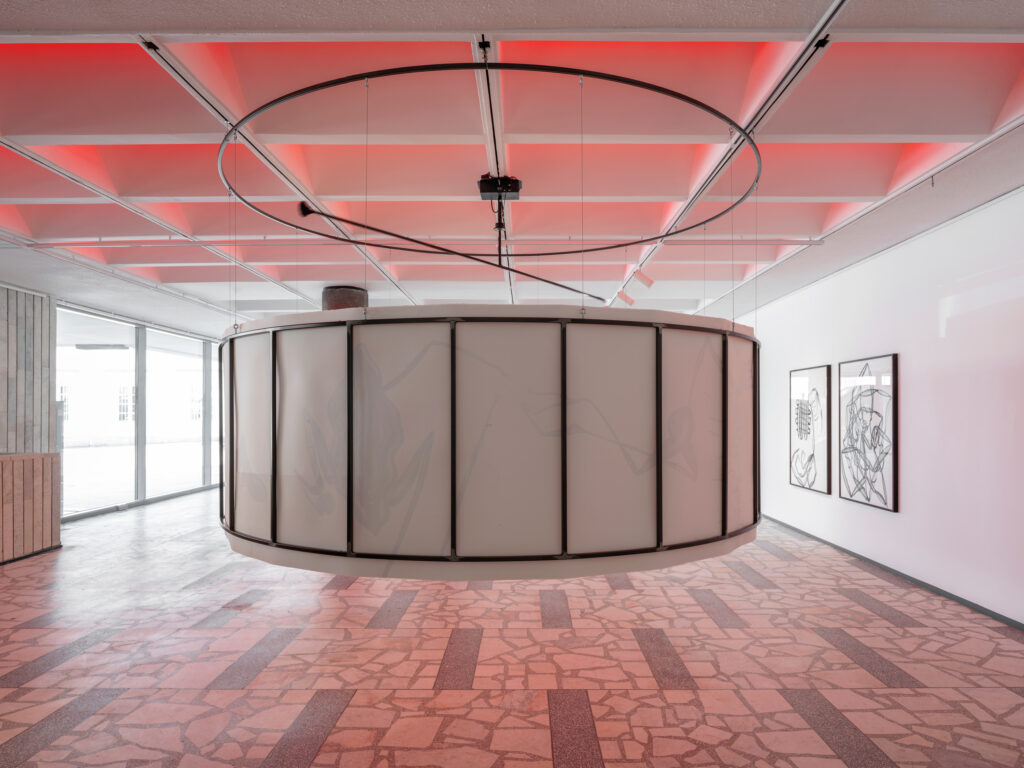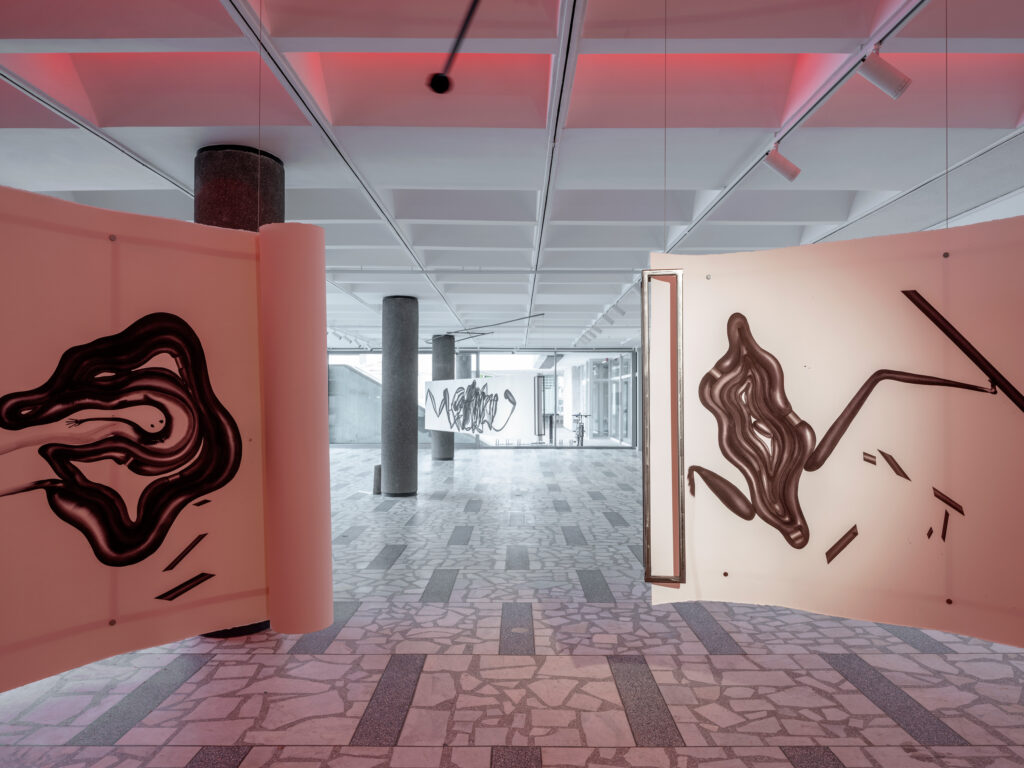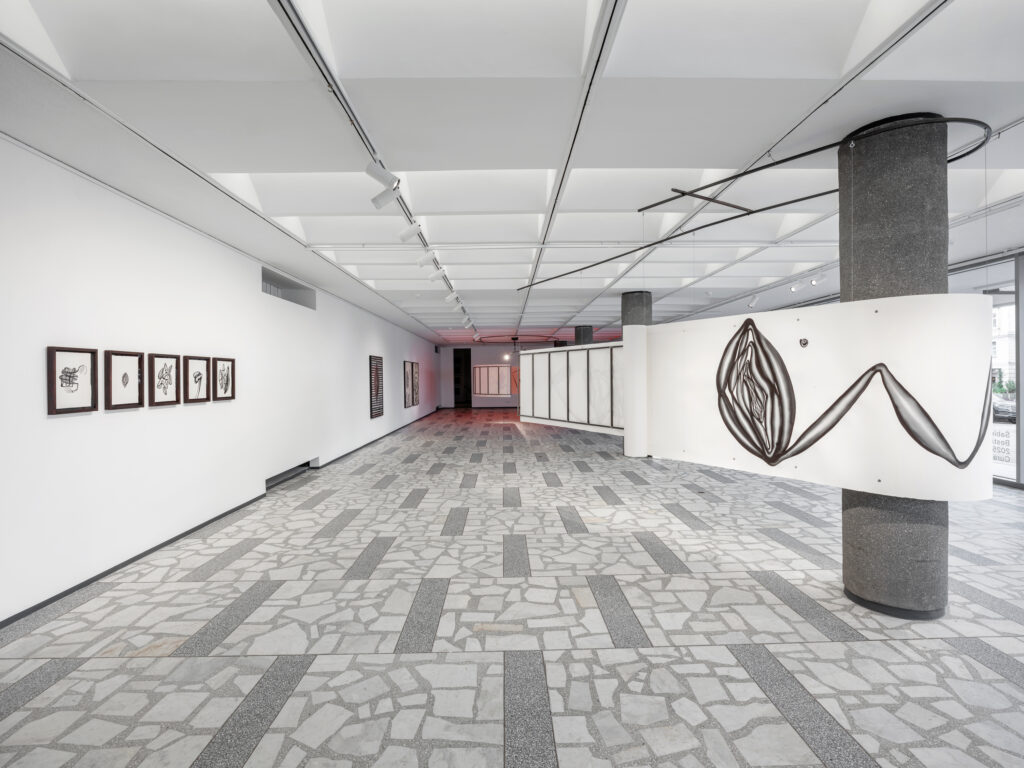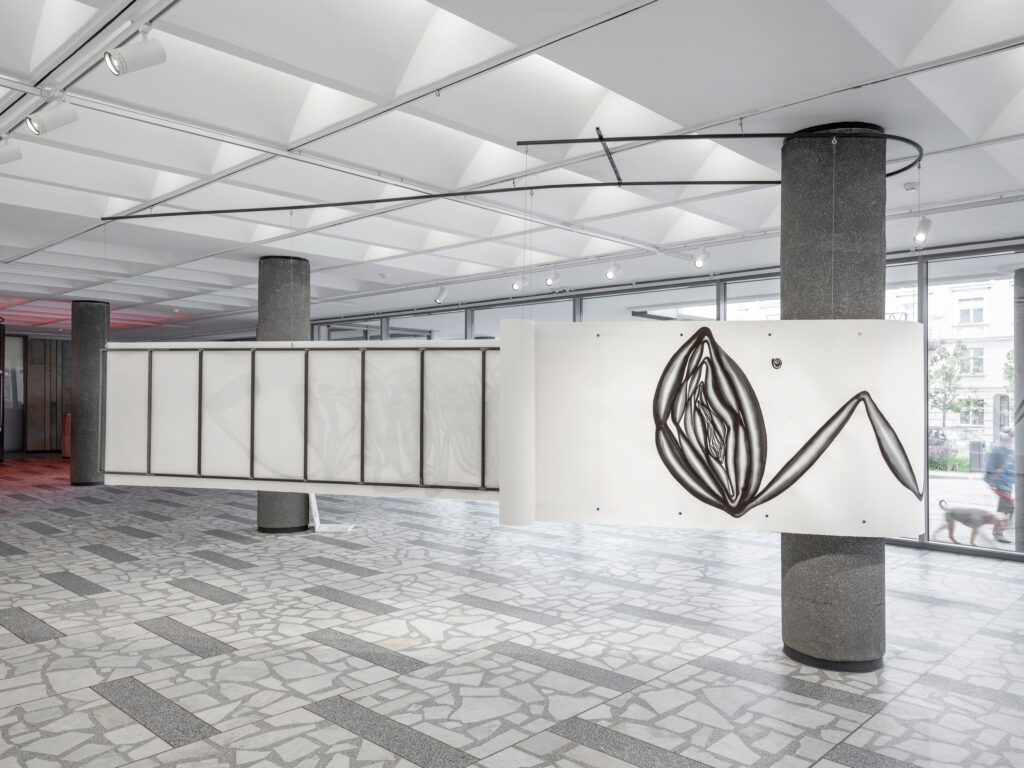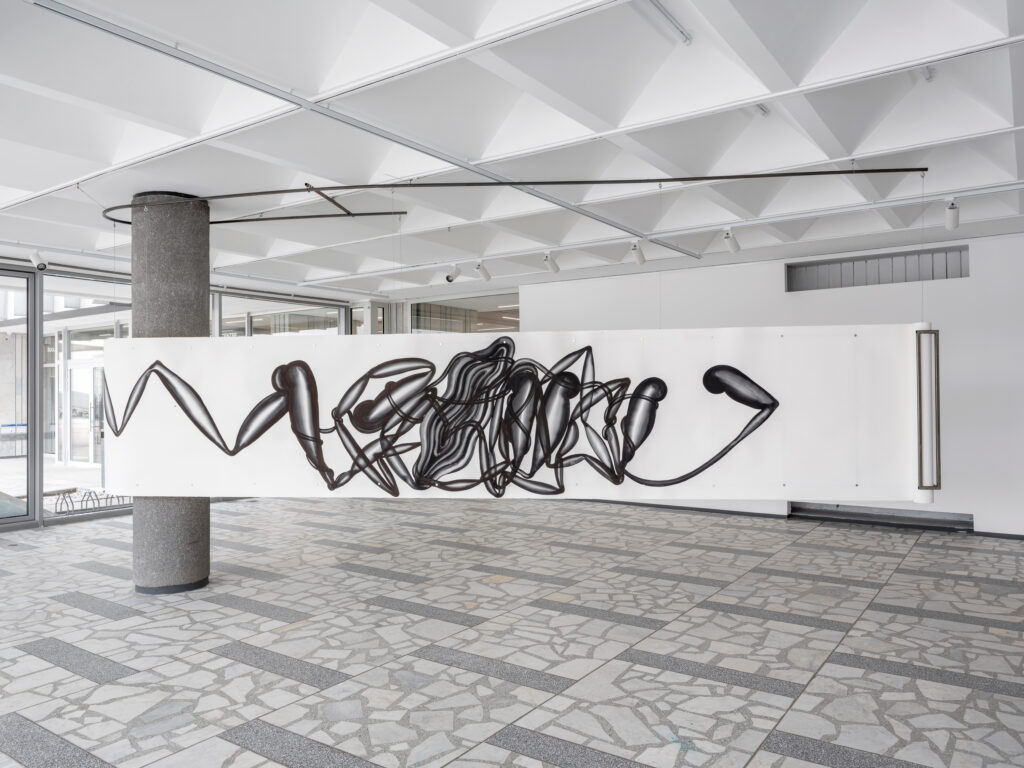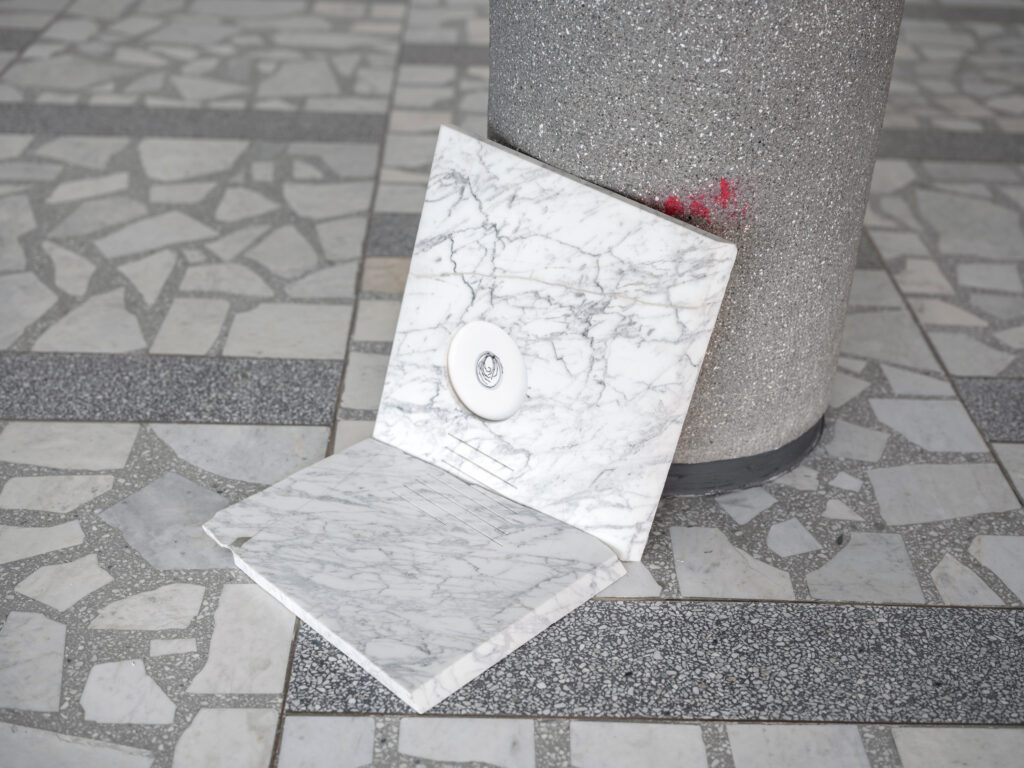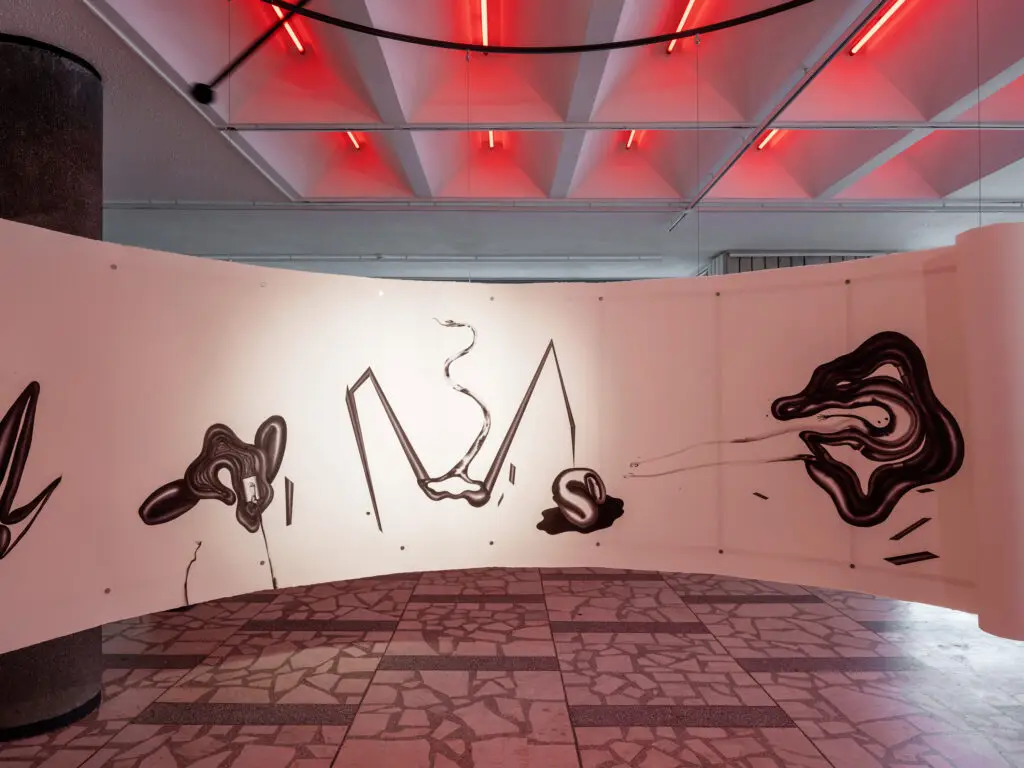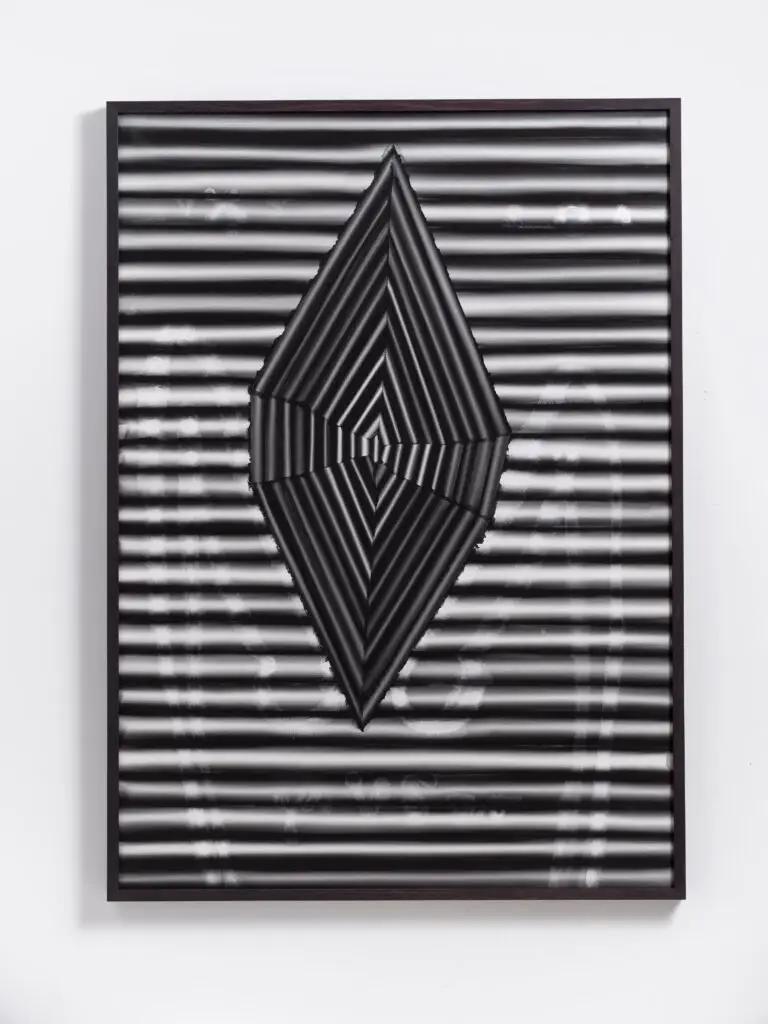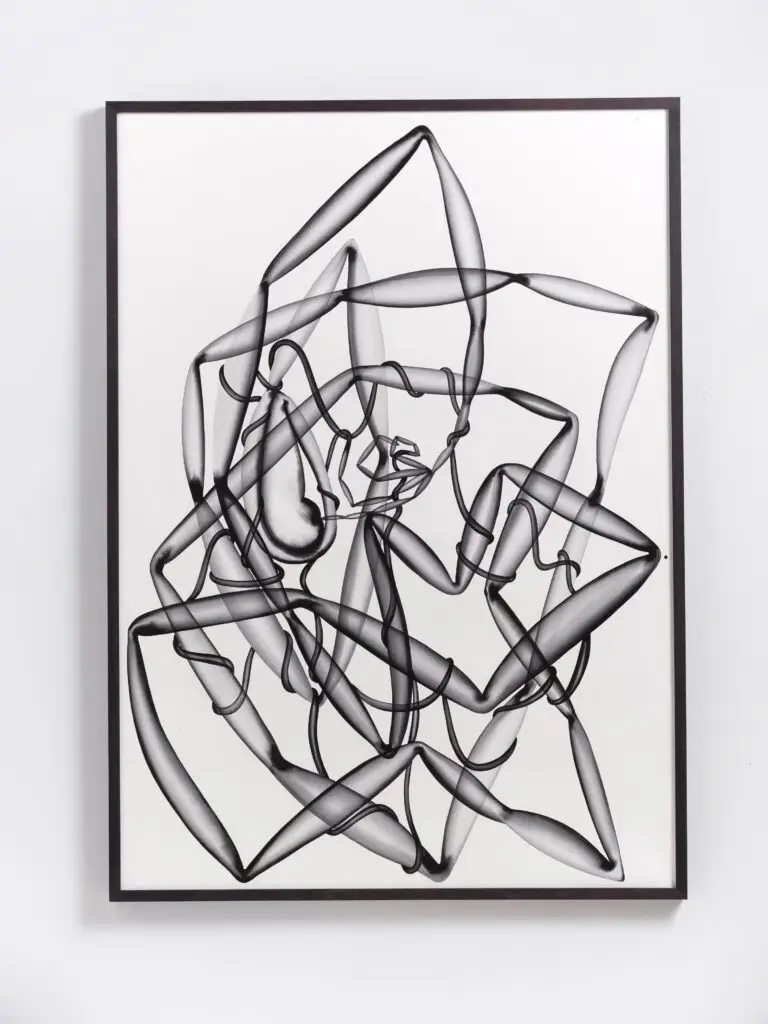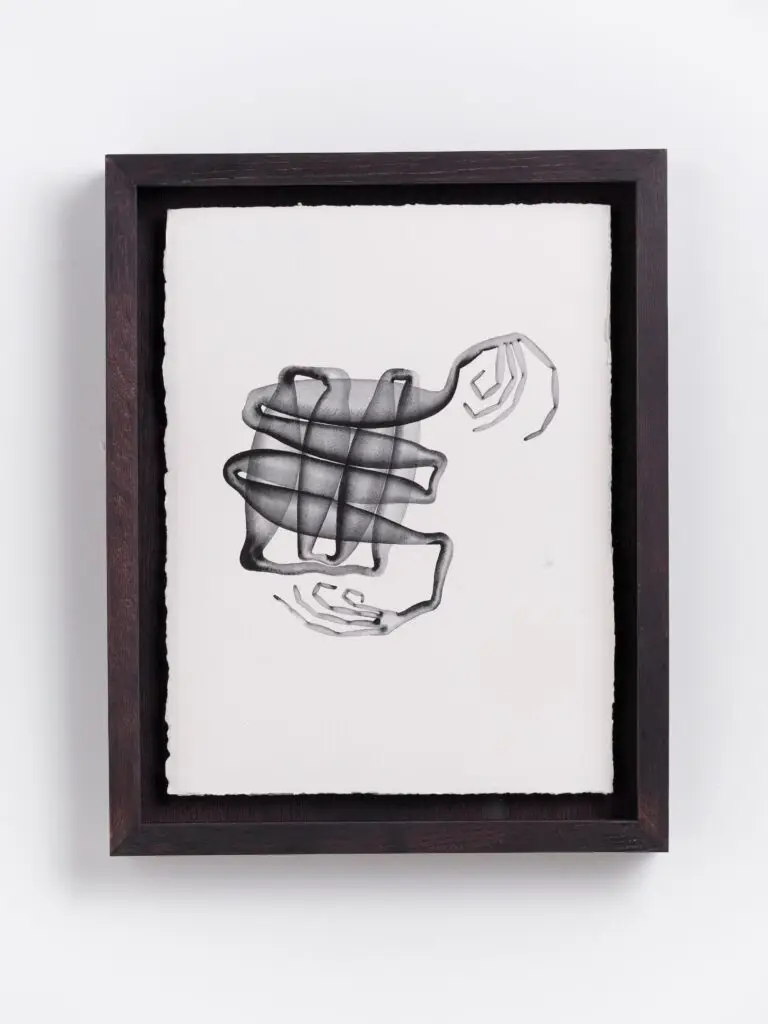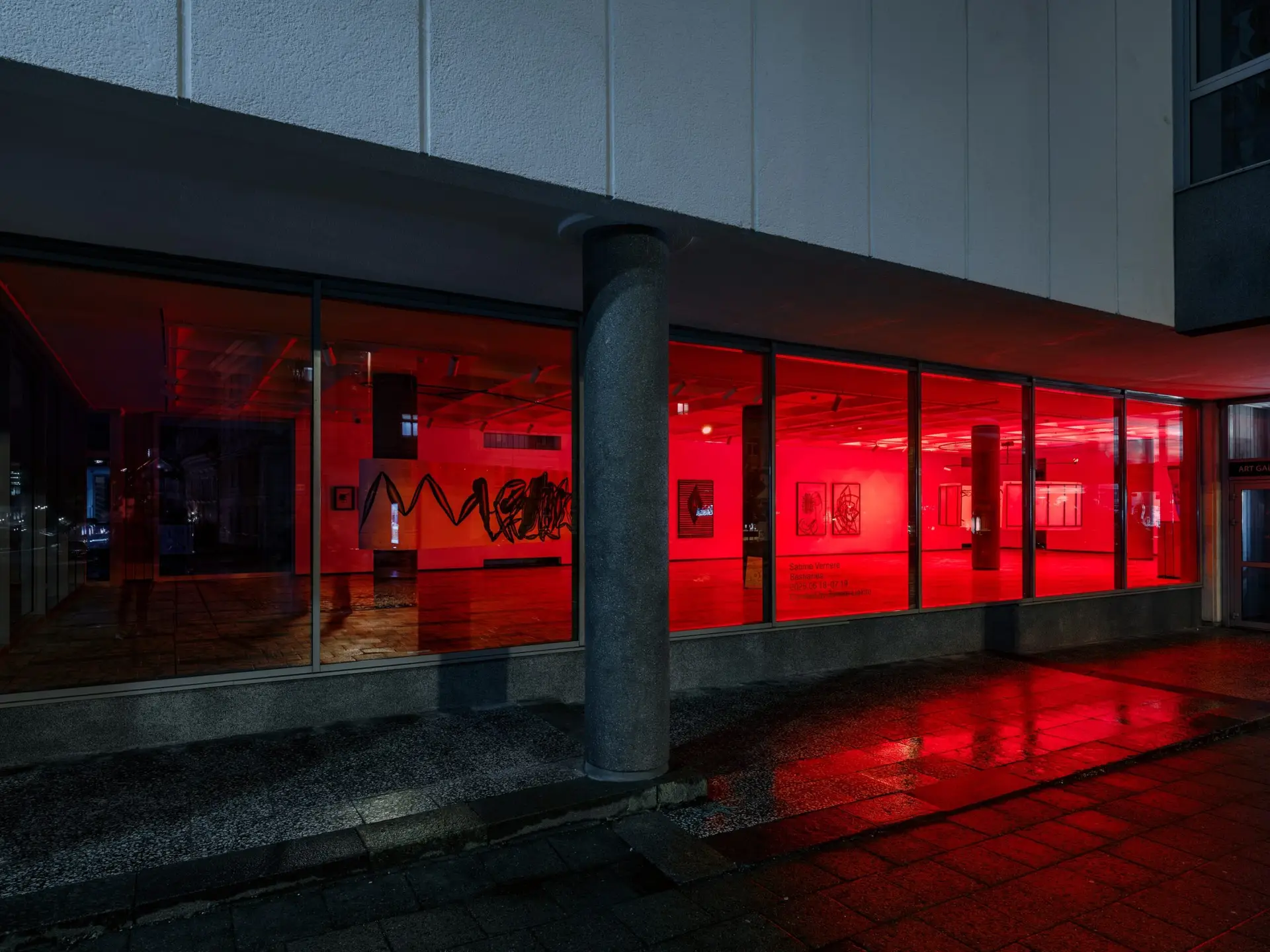Artist: Sabīne Vernere
Title: Bestiaries
Curator: Žanete Liekīte
Venue: Meduza, Vilnius
Photos: Reinis Hofmanis
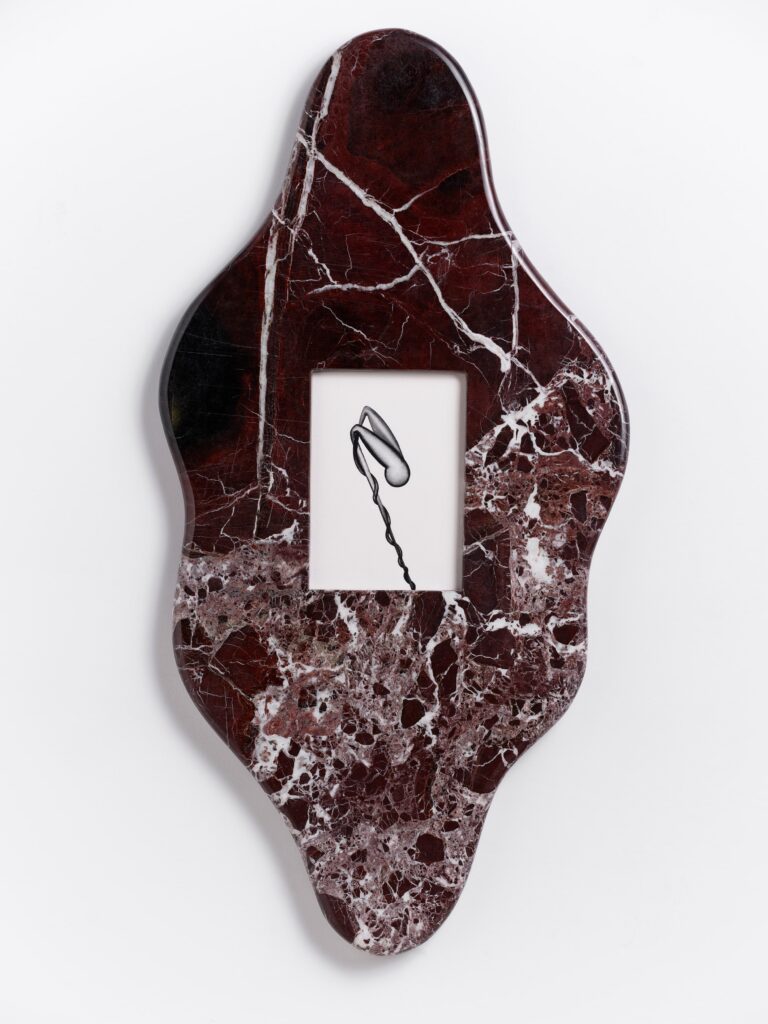
Sabīne Vernere’s solo show Bestiaries draws on the medieval compendium of beasts to examine how a shifting set of prejudices clings to female forms. The artist takes cultural anxiety as her starting point, exploring female sexuality as a historically politicized terrain of fear, desire and control. Western culture has never quite trusted women. That’s a persistent social legacy dating back to antiquity, “a feeling that every one of them may have claws and tails if you look below the waterline.”
Lions, serpents, dragons, women: are listed side by side in the pages of medieval bestiaries. The loose-haired topless mermaid was counted among deadly creatures, her sexualized form catalogued as equally fearsome. Here, female sexuality becomes threatening not through biology per se, but through the cultural coding of desire as a site of danger. A historical slippage is at play: sirens, once melancholic bird-women; Lamia, a child-snatching half-snake; Medusa, all fangs and fatal stare – each gradually rebranded from ancient myth into hyper-feminized, sexually legible bodies by the Middle Ages, still equipped with a built-in killer feature. The beast becomes a woman; the woman, a beast.
From the Greeks to Freud, femininity has been cast as a “dark continent”, closer to nature, further from reason. Feminist thinkers later flipped the script, using those same metaphors to expose the absurdity of the mysterious other, what Betty Friedan famously called the ‘feminine mystique’. In the post-Soviet Baltics, this enduring opacity around femininity takes on a specific shape: the superwoman. Efficient, polished, ideologically sound – and entirely abstracted from the visceral, complex biological realities of being female. Femininity remains a secret because it is systematically concealed, reduced to surface and performance. Beneath this seamless exterior, womanhood remains a site of ambiguity, shame, threat, and desire – shaped by external projections and gradually internalized, maintained, and mirrored by women themselves.
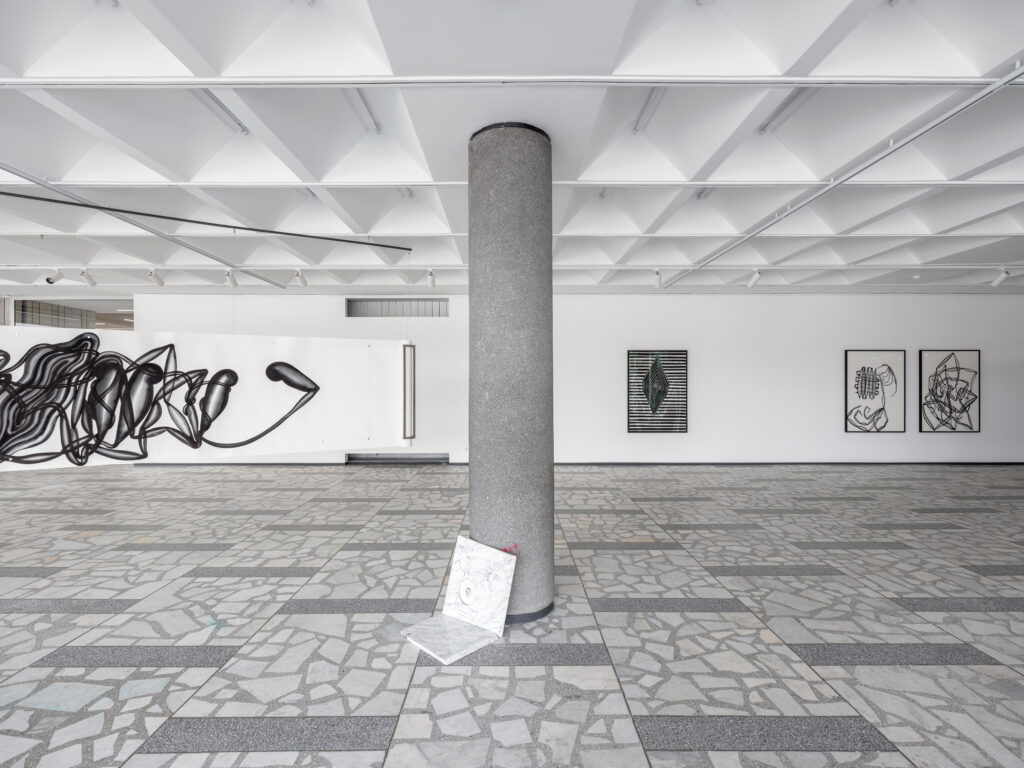
The gaze doesn’t just surveil – it seeps in. What starts as a projection becomes instinct: a slouch, a stiffened neck, a posture that feels not quite her own. As Michael Foucault mapped and Judith Butler extended, surveillance is most effective when it becomes self-administered — when the body learns to police itself. Women internalize the script, editing themselves in real time, performing a quiet choreography of self-regulation. This tension between appearance and affect, discipline and disobedience becomes a compelling analogue in Sabīne Vernere’s artworks. These bodies move with intent, reach outward, then knot themselves in their own momentum, struggling for release.
Vernere’s exhibition frames a cultural logic of womanhood as opaque – both feared and fetishized. Her candid engagement with female sexuality has often provoked discomfort, moral scrutiny, and even accusations of perversity. These playful biomorphic figures embody the contradictions of claiming sexual agency. Lively and bold, they remain self-aware—acutely attuned to the risks of transgressing the bounds of ‘proper’ femininity. At times they flirt, extending tendrils toward the viewer with unashamed curiosity; at others, they shrink back, curl inward, awkwardly contorting themselves in gestures of ambivalence or discomfort. Set against the rigid geometries of Soviet modernist architecture, Vernere’s fluid egg tempera figures create a subtle tension – a quiet clash between natural impulse and ideological order.
